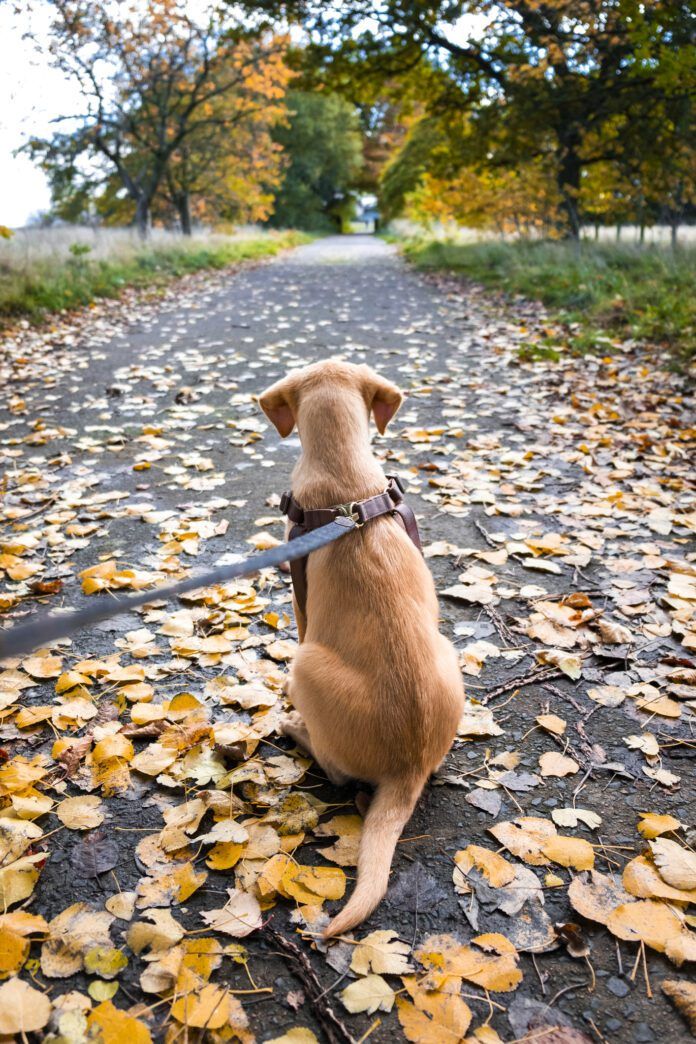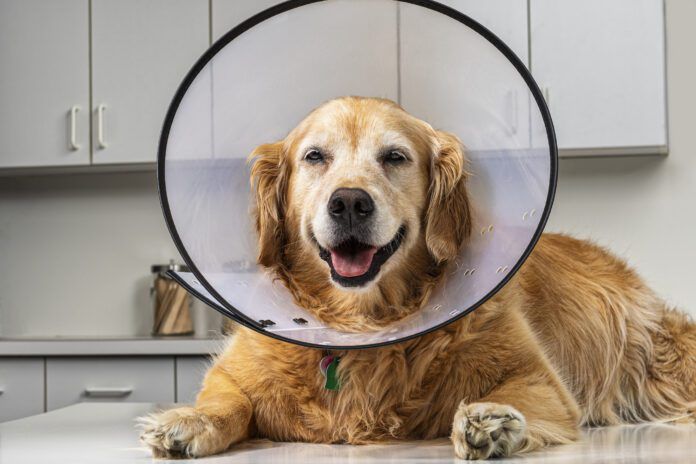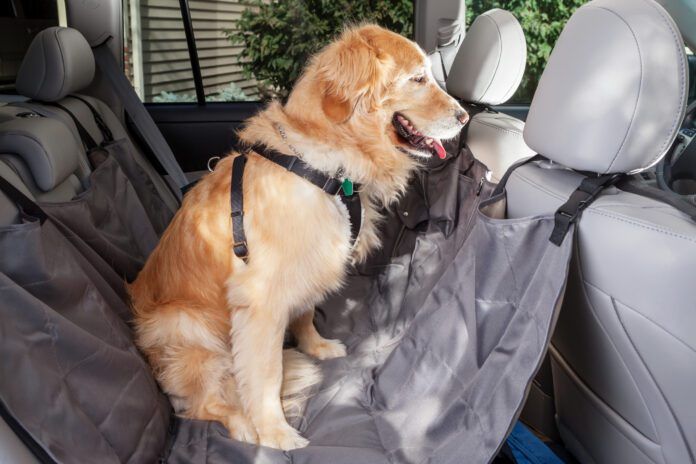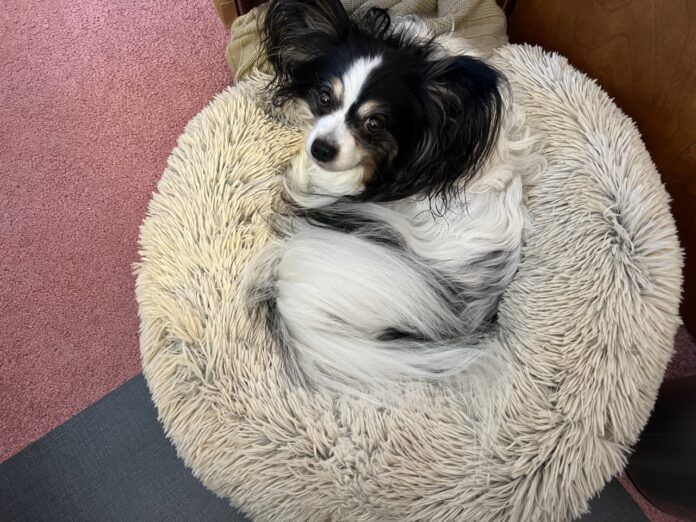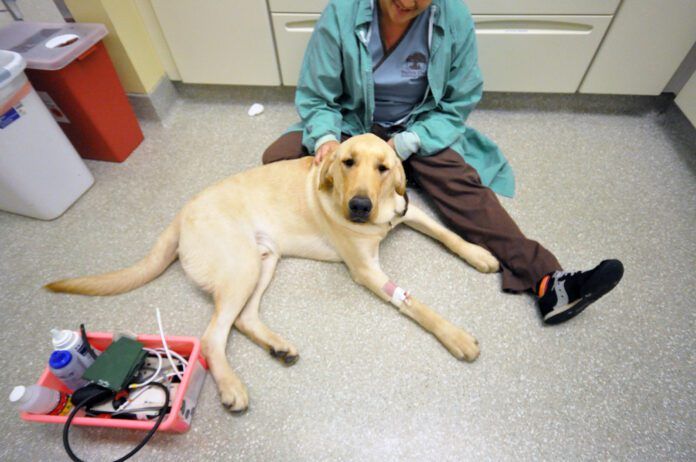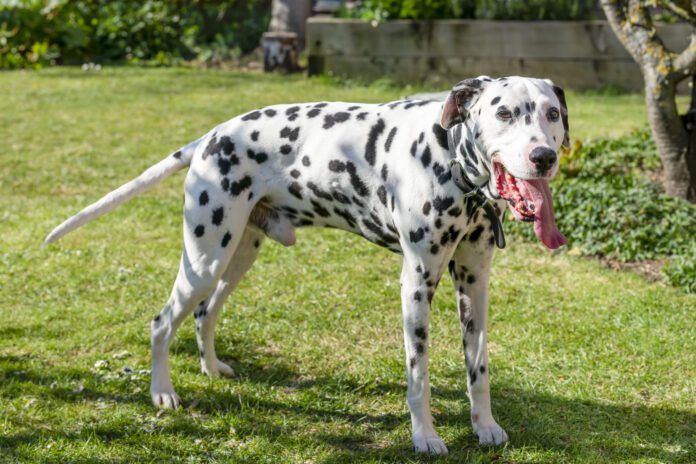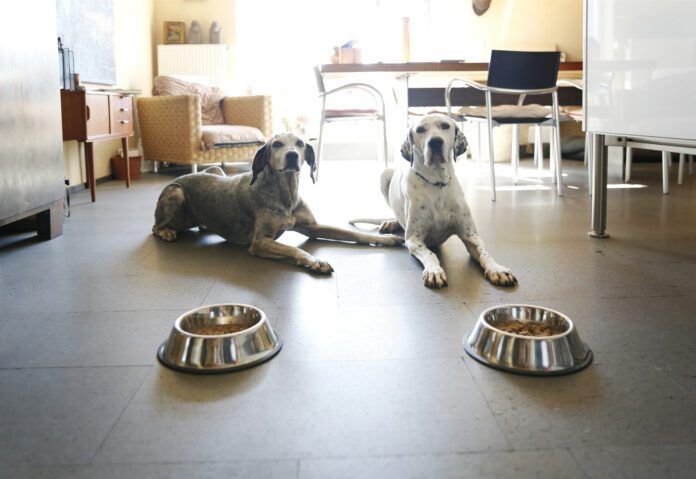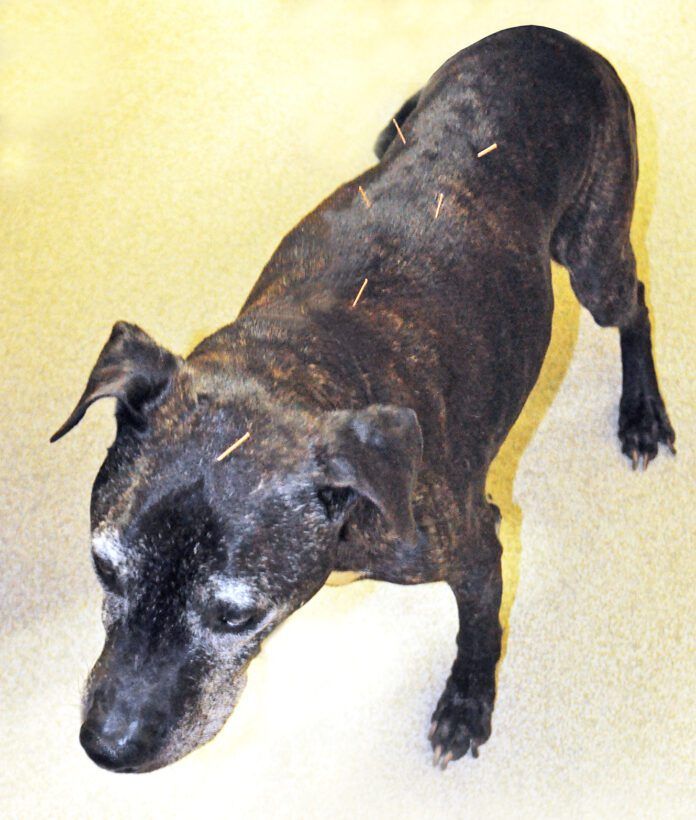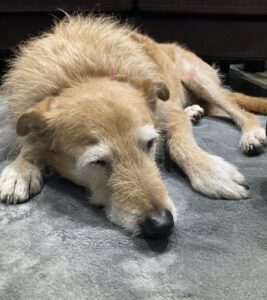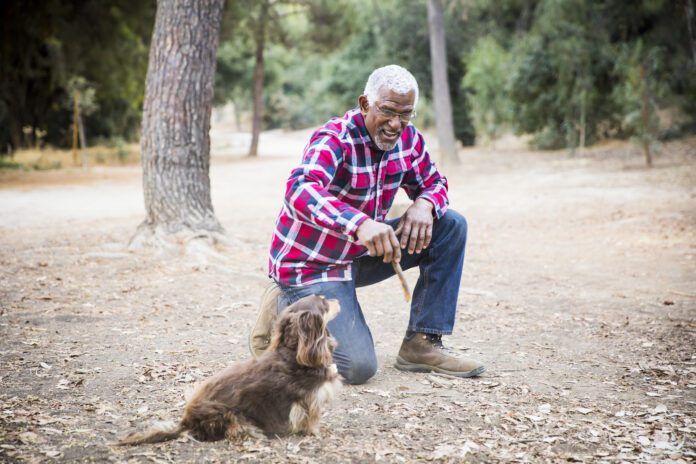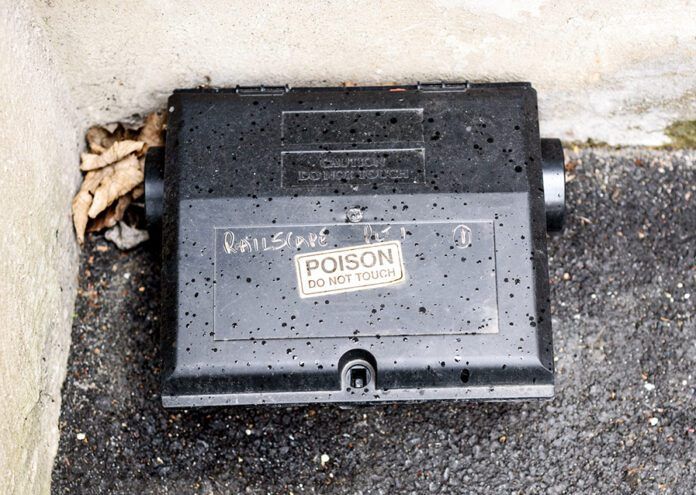Socializing your puppy the right way takes thoughtful effort, but it just might be the most important thing you’ll ever do for your dog.
The first four months of a puppy’s life hold particular potential to affect his confidence as an adult. A robust body of research has shown that puppies are deeply, quickly, and often permanently impacted by what they experience during what’s now called the “sensitive period,” from about 3 to 14 weeks of age. Pups who have a range of positive experiences with humans and our world in that key time frame are much less likely to become skittish or fearful adult dogs.
Sounds like a great opportunity, right? Except it also sounds like a lot of pressure on owners. That ticking clock (only 14 weeks!) can push people into going overboard – which has the tragic effect of accomplishing the exact opposite of the goal. Why? Because that sensitive period works both ways.
Let’s say two owners want to be sure their puppy turns out to be great with kids, and they know these early weeks are key. One takes their pup on a well-intentioned trip to the soccer game sidelines, where he is swarmed by squealing kids, all reaching for him at once. The other arranges a supervised visit from the three nicest neighbor children, who sit on the floor dangling fun toys and hoping the pup will choose their lap.
Those experiences might not look different to an inexperienced owner – but read on to see why, later in life, the soccer-game puppy may need to be crated whenever kids are present, and the neighbor-kids puppy may waggily insist on being included in every birthday party. The devil is in the details.
To get socialization right, owners have to walk a tightrope. They need to gently expose the puppy to all sorts of new sights, sounds, smells, people, places, and surfaces – all without letting the puppy feel scared. (A momentary startle is fine, but we want to see a quick bounce-back.) It takes a little education and planning to make the most of this short phase, but the payoff is huge.
Earn Your Puppy’s Trust
The first step is to build trust. Studies show that the youngest puppies can happily handle new things as long as the mama dog is right there. Take away the mom, though, and suddenly that loud noise feels scary. Once you bring a puppy home, you have the chance to become the security blanket that helps your puppy bravely explore the world.
To do that, be a calm, consistent, gentle, positive presence at home. The puppy needs to learn to feel totally safe with you. (Try not to mess up and yell when you see a puddle on the floor!) The more a puppy trusts you, the more easily he’ll gain the confidence to explore new situations with you by his side.
Learn Body Language
Before you start introducing potentially startling Human World things to this toddler from Planet Dog, learn more about your puppy’s body language. Puppies can’t say the words “I’m scared,” but their bodies are constantly talking to those who will listen.
Most owners will pick up on when a pup is doing the equivalent of screaming: trembling, pulling away, hiding. But there are many more subtle ways that a dog can reveal discomfort, and they can be easily missed (see the sidebar below, “Stressed Puppy Body Language That’s Easy to Miss”).
While you’re still refining your observational skills, there’s an easy trick that lets you off the hook: Simply give the puppy space, and let him choose whether and at what pace to proceed.
Give Puppy a Choice
Learning the nuances of canine body language takes time, but you’ll get more clues about your puppy’s confidence if you give him a choice about each interaction. That means:
- Let him walk. You’ll learn a lot about how a puppy’s feeling about something if he walks toward it or away from it. That’s why it’s better, if you can, to put pup on the ground in new situations.
- Don’t pull the leash. Dragging him toward something new will not make him “get used to it” – and may make him scared of it (and you) forever.
- Never trap the puppy. Feeling trapped – by a leash, by a hug, by a circling crowd, by a tiny hallway – makes any new experience scary. Always provide an easy escape.
If you give your pup agency in these ways throughout each new experience, you’ll increase the odds that it will imprint positively on him and make him a more confident adult.
Make Experiences Positive
The goal of socialization is to help your puppy form positive associations with all sorts of novel things. We could never introduce a pup to everything he’ll encounter later in life, so instead we aim to teach a pup to feel great about novelty itself. We want the adult dog to see something he hasn’t seen before and think, “Huh. I don’t know what that is, but there’s no reason to worry.” To accomplish that, exposure alone is not enough. Here’s how to stack the deck so that things feel more positive:
- Keep your voice happy. First, remember to watch your own vibe. As your pup’s guide to Human World, you want to set the tone. Use a calm demeanor and a happy voice as you narrate what’s happening. “Hey! I see a bike! Do you see that bike? It’s okay, it’s just a bike.” (To learn more about how talking to your pup helps her learn, see “How to Talk to Your Dog,” WDJ July 2022.)
- No forcing. Is pup hesitating? That’s okay. Be patient. Put more distance between your pup and whatever is scaring her; just cheerily move in a different direction. “Hey, that’s a truck! Let’s head over here so we can watch it from a distance.”
- Use food. Delicious food is the easiest, most direct way to form a happy link between an experience and a pup. Your pup pulls back at a flag waving? “Oh, look, it’s a flag! Here’s some chicken!”
- Don’t lure. Resist the temptation to lure. You don’t want to poison the power of food by linking it with a feeling of being scared, so don’t use food to encourage pup toward a thing he wants to stay far away from. Instead, as he makes his own choice to look at or move toward the New Thing, pair that with a bite of cheese.
- Know when to quit. Finally, know when to bail. If you had a plan to have the puppy meet the plumber who’s working downstairs and you’ve walked into the room with a happy vibe, sat with pup at a distance, giving a salmon treat every time he looks at the guy, and then pup wants to head for the hills … Call it quits for today! Go play with a squeaky toy upstairs.
Start at Home
Now that you understand the key principles, it’s time to get started. Great socialization begins at home, where the puppy is most confident.
Since the goal is “novelty,” there is no generic must-do list, but we’ll offer a sample list for inspiration. Any home – even the tiniest of apartments – can be an adventureland for a little puppy if you just put on your thinking cap. Write down one new thing you do each day and use the tips in the three sections above to guide every new experience.
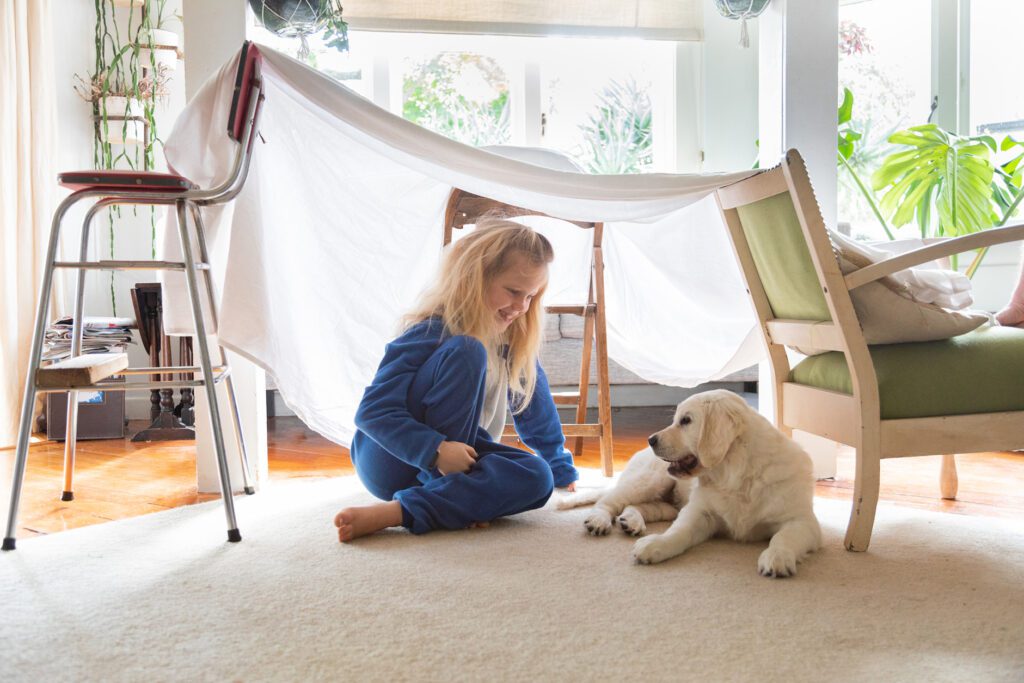
Here’s how you’d go about introducing the first suggestion on our list (wearing different hats):
While the puppy is relaxed and looking at you, show her a hat, and give her a treat. Let her investigate the hat, and give her another treat. Continue completely at her pace until she’s absolutely relaxed around the hat, then put it on, and immediately take it off. Treat!
Unfazed? Great, do it again. Toss another treat. Continue at the puppy’s pace until she is eagerly awaiting you putting on the hat because it means another treat is coming her way. Next, keep the hat on and do some fun training as long as the pup is engaged with you and not worried.
The next day, try a different hat. All okay? Then, instead of letting the pup see you putting on the hat, walk into the room with the hat on. Take it off immediately as you say “It’s okay, it’s just my hat!” If the pup is worried for more than a few seconds at any point, call it a day and start again the next day at a lower intensity.
Mimic this stair-step approach for each of your pup’s novel experiences. Keep in mind that some dogs will be so obviously confident about some of these things that you’ll be able to go from introduction to high intensity interaction almost immediately. Others may feel excruciatingly slow, but keep it up because it works.
Here are some suggestions for novel experiences you can set up for your pup at home:
- Wear different hats.
- Play music. Start with Bach at low volume and slowly progress – as the puppy shows she’s fine with it – to louder rock music.
- Walk around wearing a backpack.
- Click across the floor in heels; walk in clunky boots.
- Starting with the pup in the next room, run a blender, vacuum, or hair dryer for just a few seconds. Does pup come to investigate? Great. Do it again for just a few seconds, and toss her a treat. “It’s okay, it’s just the blender!” Still okay? Increase the duration. Here’s a link to what “puppy’s first vacuum experience” might look like.
- Drape a sheet between two kitchen chairs, letting it dangle.
- Take “field trips” to parts of the house the pup doesn’t usually see. Play there for a few minutes.
- Carry a big box.
- Starting at a low volume, put on TV shows for a few minutes here and there that have sounds the puppy otherwise won’t hear, maybe: kid voices, screeching tires, sirens, laugh tracks.
- Put a crinkly tarp or aluminum foil on the floor for a bit, so pup can investigate and, ideally, walk across it.
- If you have a battery-operated holiday decoration or kid toy that moves or sings, put it at the far end of the room and let puppy explore it. Here is a video of a puppy learning about a Roomba!
- Invite over one nice, calm neighbor who will respect your instruction to wait for puppy to choose interaction. Going well? Progress to more folks, more movement, more volume.
- Sit on your front stoop when pup might get to see bikes, strollers, skateboards – all from the safety of his home.
Note that big families with young kids will not have to work quite as hard at this, because there is likely always something new, loud, and filled with motion happening. It’s empty-nesters like me, and folks who live alone, who need to work a little harder to vary our routines.
Next: Field Trips
Of course there’s only so much your puppy can learn about the world from the confines of your own home, and that’s why it is critical to get out and about. Wait a week or two to make sure your pup has transitioned comfortably to your household, but then it’s time to plan some outings.
That planning element is key for two reasons. The first is the puppy’s health. During the time the socialization window is wide open, puppies aren’t yet finished with their vaccination series (for diseases such as distemper and parvo). Decades ago the advice was to stay home until it was 100% safe to go out, but we know better now: That black-and-white guidance does more harm than good (see “Balancing Dual Threats: Protecting Puppies Against Viral Disease and Behavioral Problems,” October 2022). Be safe and smart; get that pup out where he can become more behaviorally sound thanks to solid exposure to the wider world.
The second reason planning is key is because you need to be 100% attentive to your pup if socialization is to be effective. It’s a common mistake to think it’s a great idea to bring the puppy everywhere you go. Nope! Don’t try to multitask.
If there’s a sale at the dog-friendly garden store, go spend a lovely hour selecting your plants – and leave puppy home with a food-stuffed toy. Go back there the next day for an adventure with your puppy, when you can focus 100% on his body language and adjust based on his needs. Here’s a video that shows what “puppy’s first trip to a store” should look like.
Here are some outings designed to prevent overwhelming your pup:
- Visit your favorite neighbor’s yard. Play tug, give treats.
- Walk past the playground while the kids are out there running and playing. Happy voice: “Do you hear those kids? Those are kids, playing!” Time for tiny pieces of hot dog.
- Bring puppy to your friends’ houses. Worried because puppy’s not house-trained yet? Walk around out front until puppy goes to the bathroom, then visit inside for just five minutes – ideally long enough for your happy voices to help the puppy choose to go sit in your friend’s lap as she sits on the floor.
- Once your puppy is comfortable trotting along on a leash (see “Pup Won’t Go? Steps to Take for Puppy Leash Training,” August 2022) walk your pup in increasingly busy environments. Eventually we want the pup to have the opportunity to see all kinds of people, other dogs, cars, trucks, etc., even at a distance. Hitting Main Street on a crowded sunny Saturday is not the way to start! Choose streets farther from the center of town and go on a weekday. Here’s a video of me showing my puppy Georgie that cars are nothing to be afraid of.
- Take your pup on very short, predictable car rides, often. Going around the block is good, and going someplace the puppy loves is even better. Don’t let the only car rides be to the vet!
- Go wherever you need to so that your pup can try walking on grass, sand, mud, concrete, tile, stairs, a bridge, and so on.
- Give your pup a chance to choose to step in water. Small streams on a woods walk are a great way to start.
Don’t Get Overwhelmed!
I hope you feel empowered rather than overwhelmed after reading this. Once you wrap your head around it, it’s actually easy to give your pup (and yourself) this amazing gift. It does not take loads of time; it’s really a matter of flipping a switch so you keep it top of mind.
Happen to have lots of time this afternoon? Bring your pup to your friend’s house! Overwhelmed by other obligations today? Fine. Put on a hat!
The key to socializing your puppy effectively is using her feelings as a guide – but that’s impossible if you don’t know how your pup is feeling! Studying up on canine body language is the answer. Some signs of fear and stress are obvious, such as trembling, running away, and hiding, but keep an eye out for these subtle signs, too:
- Yawns. Folks, dogs are not that tired. Those yawns you’re seeing – especially if they seem exaggerated and extra wide – are most likely a sign of stress. You’ll see it in a training class, when guests come over, when you’re petting too much, and when kids hug a dog. Those yawns are a dog processing discomfort. If you see a yawn, ask yourself what might be making your dog stressed out.
- Lip-Licking. This is similar to yawning; dogs often lick their lips when they feel uncomfortable.
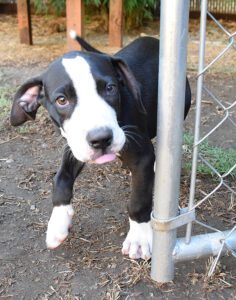
- “Kiss to dismiss.” When dogs lick humans with affection, it’s typically one quick flick, or a sustained activity of leisurely soft licks. But the lick that’s worrisome – the one that trainers call the “kiss to dismiss” – looks different. It’s intense, sometimes fast, hard, even frantic. Parents often misinterpret this, thinking the dog is finally learning to love the toddler, but that licking is designed to get the advancing human to stop!
- Turning or leaning away. If you’re approaching a dog and he turns his head away from you, it’s a request for more space. A dog who wants attention will turn toward you and lean in.
- Facial tension. A puppy’s wrinkled forehead is cute – until you realize those wrinkles are exaggerated because the pup is so worried at the moment. A mouth that’s tightly clamped shut echoes the message of those wrinkles.

- Rolling over “for a belly rub.” Yes, sometimes happy dogs will roll over to invite a belly rub. Unfortunately, rolling over can also be a white flag, a sign the dog feels overwhelmed. Additional context clues can tell you which you’re seeing, but err on the side of caution. Back up five feet, sit on the ground (so you’re not looming), and give the dog the space and time to make his own decision. (If the rolling over happened as the puppy was surrounded by your kid’s squealing soccer team, sorry, that was probably not a request for a belly rub.)

- Being unusually still or falling asleep. Sometimes people will tell me their puppy was AMAZING at the (fill in the blank with a big, chaotic experience that the human couldn’t have dialed back to meet the puppy’s needs). “She slept the whole time!” “He just sat still while everybody petted him!” Just like human babies, when they’re feeling overwhelmed, puppies will escape by going to sleep. Sometimes, they will sit or lay very still, feeling they have no other choice. Humans often misinterpret this as “good as gold” behavior when it is actually terrified behavior.
- “Whale eye.” When trainers see too much of the white of a dog’s eye, they look to see what might be wrong. That “whale eye” can happen when the stressed dog is staying very still but moving her eyes to watch what’s happening. A relaxed dog would just turn her head.
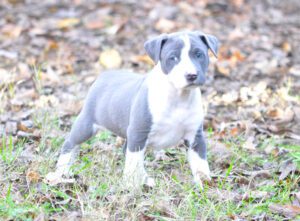
If you see any of these signs of apprehension or fear, get your puppy some more space from whatever is overwhelming her, until she’s recovered her confidence and good cheer. Also, if your pup is already overly fearful of new things you will need to do more to modify his fear behaviors. In this case, it would be a good idea to seek the help of a qualified force-free behavior professional. Also See “Are Dogs More Fearful Than They Used to Be?” December 2018.


